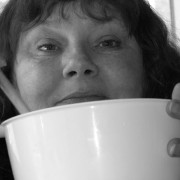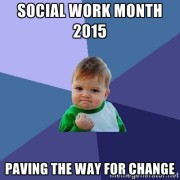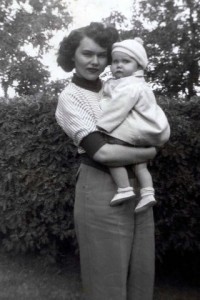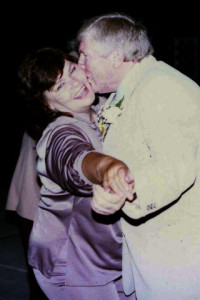Selfie
On March 28th, 2013, my mother died. She died in a hospital. It was the third time she had flat-lined, and the all the efforts of all the doctors couldn’t bring her back. My step-father had called me in the middle of dinner, sometime after the second time she was brought back; he left a voice mail that said simply to call him back. When I did, maybe an hour later, the machines were going off in the background, his voice was strained, and he told me the facts baldly — she has flat-lined again. This is her third time. I don’t know what to say. I’ll call you back.
2013 was the year of the selfie. Fancy phones with reversed lenses made taking pictures of yourself easier than ever, so much so that the OED word of the year was in fact “selfie.” It was surmised that everyone was taking self-photos: pop stars, presidents, even bald eagles.
So I guess it shouldn’t have been surprising that when my mother spent 40 days in the hospital in early 2013 and much of that time on her fancy phone with the reversed camera, that she should decide to take a selfie too.
Except that she hated to have her photo taken.
My mother was notorious for hiding from the camera, not just in later years when she decided she was “too big” to be in any given picture, or too old, or too something, but even when she was young, thin, and as beautiful as I’ve ever seen her. She had a great fascination with photography and had enrolled in a course, which meant that me, my brother, my stepsisters – hell, anyone in the family she could get — were forced to pose for various photography assignments. This being the 80s, most of these pictures ended up on slides. She had a special machine for viewing them all, technology that seemed both super advanced at the time, and still oddly ancient as it seemed to be a throw back to old camera reels that people watched home videos (without sound) on.
My mother was a talented photographer; she felt much more at ease behind the camera than in front of it, capturing beauty and smiles and moments. Photographs were very important in her life — she was always trying to capture the moments as they slipped by. Birthday parties, vacations, holidays, family dinners, just cuz days when the camera had film. Taking the photos was the easy part — she had rolls and rolls of unprocessed film filling up junk drawers and old suitcases, and boxes of photos that never made it out of their envelopes.
When the digital age hit, she traded in her fancy film camera for a fancy digital one, and taught herself some basic photoshop skills. She made a project out of trying to scan and repair old photos, starting with photos from her parents’ lives, removing the tears and wrinkles and printing them up and framing them. She tried to get as many of the old rolls of film that had sat in drawers developed and spent tons of money on fancy labs that promised to do their best to properly color the aged negatives, save what images they could. I bought her a fancy scanner that could take images from the negatives themselves, and even from her old slides. She bough albums and photo boxes. She spent countless hours immersed in images of the past.
Despite all the time spent trying to preserve and organize these images, it always seemed as if it was the lives of other people she wanted to cherish forever in 5 by 7 or 4 by 6. Her children. Her siblings. Her friends.
But not her.
Getting her in front of a camera was a group effort, a huge ordeal of cajoling and pleading, and sometimes snapping photos without her being aware of it. Her efforts to get people to delete unflattering photos of her were epic, particularly since she considered every photo unflattering. As her health declined and she gained weight (though at the time we thought she gained weight which caused her health to decline), her phobia of being captured as she was (in her words gross and fat and ugly) meant that years of her life went completely undocumented.
So imagine my surprise when I started going through the photos taken with her smartphone and saw that not only had she taken photos of herself, she’d taken these photos at her most vulnerable: while lying in a hospital bed, tubes and wires coming out of her skin, gown open and stretched to barely cover her, hair flat and matted, skin made pale in the fluorescent light. She’d taken several photos, some of her making faces, some looking serious and somber, as though she felt the need to preserve (at least for her own eyes) some record of what it meant to be in a hospital. Probably she was just bored. And yet, she didn’t delete these photos.
I know she never thought they would be seen. I know she never imagined a future where her daughter might scroll through her photo stream and, among all the photos texted to her, find these selfies.
Shockingly, these weren’t the only ones. There is one where she is at home, probably in her room, and she is peering out from over her glasses, looking bemusedly at the camera as if to say, yeah, what? She was fond of saying “whatever” and the look in her eyes in that photo declares the same. Whatever. So I’m old. Whatever. So I got fat. Whatever. So I wear glasses and probably my bangs are too long (her bangs were always either too long or too short, never actually achieving the right length). Whatever.
And still another photo is of her peering out over a mixing bowl, wooden spoon in hand, a small smile on her face. This one is my favorite, capturing her in the midst of one of her favorite pastimes, mixing together some recipe that probably only existed in her head, and tasted better than anything I will ever be able to put together.
The thing about the selfie is that it allows the person taking the photo to control their own image, to capture themselves just how they want to be captured. Artists have made entire careers out of the self-portrait, carefully crafted images with just the right lighting, set, style, flash. The fact that the less artistically trained are using photo-apps to do the same shouldn’t mean the intention is any less noble. We are all trying to shape our own images, to present the version of ourselves we see in our heads, to preserve not just how we look at any given time, but how we thought we should look, should be seen, should be known as.
My mother did not share these selfies with the world, and that somehow makes them more poignant: these were not images of how she wanted others to see her, but private moments she shared with herself. They are the remnants of some dialogue she had with herself, some moment of reflection, and of pure human vanity — or whatever it is that drives so many to flip the lens around on their cameras and capture themselves.
When I found these photos, I sent them to everyone — her siblings, her friends, her husband, and all were as equally amazed that the woman who hid from every other camera had so willingly posed for her own. But of course she would. Of course she did. It was the most human thing to do.
And I will always be grateful that she did.










